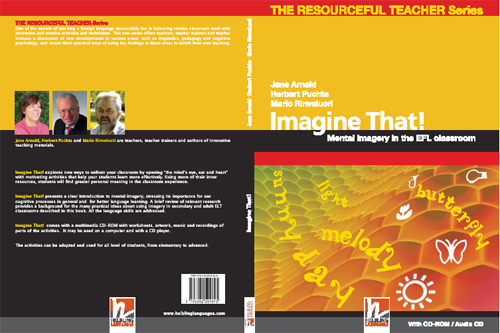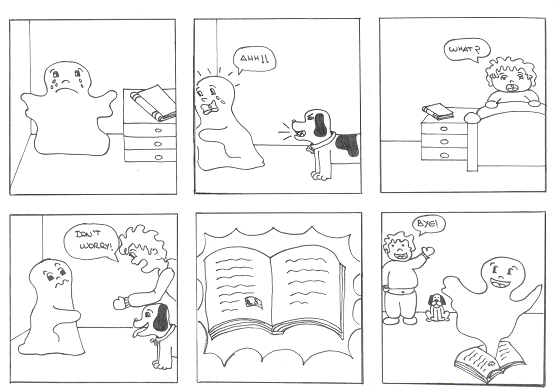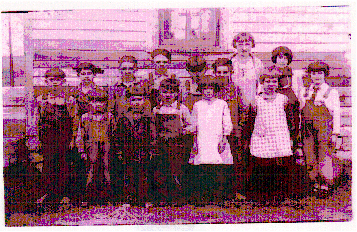Imagine That! Mental Imagery in the EFL Classroom
Jane Arnold, Herbert Puchta and Mario Rinvolucri

Published 2007 by Helbling Languages, www.helblinglanguages.com
Jane Arnold teaches in the English Department at the University of Seville and has given plenaries, teacher training workshops and modules for Masters programmes in many parts of the world. She has edited the volume Affect in Language Learning (CUP) and does research in the area of the affective domain of language learning and teaching. Email: arnold@us.es
Herbert Puchta is Professor of English at the Teacher Training University (Pädagogische Academy) in Graz and has been a plenary speaker at numerous international conferences. He has done research into the practical application of findings from cognitive psychology to ELT. Herbert has co-authored numerous textbooks for the teaching of English as a foreign language, and his latest resource books are Multiple Intelligences in EFL (with Mario Rinvolucri) and Teaching Grammar Creatively (with Scott Thornbury and Günter Gerngross).
Mario Rinvolucri teacher, teacher trainer and author. Has worked for Pilgrims for 32 years and used to edit Humanising Language Teaching. Regularly contributes to The Teacher Trainer. His books include: Creative Writing, with Christine Frank, Helbling, Multiple Intelligences in EFL, with Herbert Puchta, Helbling, Unlocking Self-Expression through NLP, with Judy Baker, Delta Books, New edition of Vocabulary, with John Morgan, OUP, Humanising your Coursebook, Delta Books, Using the Mother Tongue, with Sheelagh Deller, Delta Books, Ways of Doing, with Paul Davis and Barbara Garside, CUP. Mario's first CDrom for students, Mindgame, was written with Isobel Fletcher de Tellez, and engineered and published by Clarity, Hongkong in 2000. E-mail: mario@pilgrims.co.uk
Menu
Introduction
Doubling a Picture
The End of the Story
My favourite places
Remember then
Where animals live
Introduction
"The image is the great instrument of instruction". So wrote John Dewey, influential philosopher and educational reformer, over a hundred years ago - but mental imagery still has not been given the place it deserves in educational settings.
IMAGINE THAT! Mental imagery in the EFL Classroom is a step in the right direction. Work with imagery can make a significant contribution to all aspects of language learning. It can help our learners to understand the language they hear or read better, and can enrich the language they produce by providing them with something they really want to write or speak about.
IMAGINE THAT! explores ways to motivate your students by opening the mind's eye, ear and heart. After an introduction to the importance of mental imagery for language learning, many practical suggestions and clear guidelines are given for beginning to use imagery in the classroom. Then five sections - Visualisation Training, Language in Mind, Stories Stories Tell, Images of Time and Space, and Spinning Inward - provide a wealth of ideas for English language teaching. Using these activities, both students and teachers may well find the classroom a more creative and stimulating place to be.
With the book comes a CD Rom with music, artwork, photos, worksheets to be photocopied and taped visualisation scripts.
Doubling a Picture
Language focus: Question forms
Level: Elementary upwards
Time: 30 - 40 minutes
Preparation: Select a large (at least A3 ) picture of a person. The picture is best when it has some ambiguity and mystery.
In Class
1. Place the picture where all the students can see the person portrayed. Set a chair next to or under the portrait.
2. Go to the back of the room and have a long look at the person. In a low, gentle voice, put these questions to the person portrayed.
Are you feeling comfortable?
How old are you?
What are you thinking?
How rich / poor are you?
What kind of father did / do you have?
What sort of person is attracted to you?
What kind of parent would you make?
How do you feel about life?
And how about death?
Do I like you?
Do I fear you?
Do you leave me indifferent?
3. Suggest the students forget your questions and write 6 - 8 questions of their own addressed to the person portrayed. They work individually.
4. Now ask for a volunteer to sit on the chair near the picture and provide the person portrayed with a voice.
5. The students ask their questions and the "voice" answers them, quickly building up a sense of the person. They may think of new questions to ask as the characterisation develops.
6. After a while, ask if another student would like to be the "voice" and repeat the picture interview. Normally the new student builds a new characterization.
Acknowledgement: We have learnt doubling activities from Bernard Dufeu, author of Teaching Myself (OUP, 1994) and from John Morgan.
The End of the Story
Language focus: Speaking and/or writing
Level: Elementary to advanced
Time: 40-50 minutes
Preparation: Make copies of the beginning of a story, or use the one below
In class
1. Hand out the beginning of a story. Ask your learners to read the text.
Example:
The ghost who came out of a book
There was once a very small ghost who lived in a book - a book of ghost stories, of course. Sometimes people caught a glimpse of it and thought it was some sort of bookmark, but mostly people did not see it at all. When anybody opened the book to read it, the ghost slipped out from between the pages and flew around the room, looking at the people and the people's things. Then, when the ghost saw that the person reading the book was growing sleepy or was finishing the story, it slid back into the book and hid between the pages again. There was one page it especially liked, with a picture of a haunted house on it.
One evening a child was reading the ghost stories and the ghost slipped out of the book as usual. It flew around the top of the room and looked at spiders' webs in the corners of the ceiling. It tugged at the webs and the spiders came out, thinking they'd caught something. Then the very small ghost shouted "Boo!" at them, frightening them so that they ran back into their cracks and corners to hide. While the ghost was doing this, the child's mother came in, shut the book, kissed the child and put the light out, all in a second or two. The ghost was shut out of the book and left outside, in the world of the house.
"Oh well," said the ghost, quite pleased ...
|
2. Tell your class that they are going to find out more about the curious little ghost from the story. Ask your class to have pen and paper ready. Draw a set of six picture frames on the board. Ask them to copy these onto their paper and tell them that they are going to see how the story with the ghost will continue. Then say in a soft and gentle voice:
You have read the story of the little ghost. I wonder how the story's going to go on? What will be in the first picture? Close your eyes and find out what's going to happen. Maybe you can see the picture quite clearly, or maybe you just get a vague idea of what's going to happen. Take your time and find out about it. When you have finished with picture one, open your eyes and either draw a matchstick version of the picture or write some words into frame one.
3. Give your students time. Then continue:
Now you are going to find out about picture two. What's in it, can you imagine? Again, take as much time as you need. Then open your eyes again and either draw picture two or write some words into the second frame. Take all the time you need; and then go on in the same way with the rest of the story. Close your eyes as often as you need to finish the story. Do this at your own pace.
4. When students have finished, put them in threes. Ask them to share what they have thought of and to come up with a joint, group version of the story and decide how they want to tell it to the rest of the class.
5. Have the students form a circle with their chairs. Each group now tells their story to the class.
These drawings were created by Concha González, a student in an ELT writing class.
 Variations
Variations
1. After sharing orally in groups, the students write a joint version which is circulated round the other groups.
2. After completing their six drawings students write down their stories individually, and then in groups of three read each other's versions.
Acknowledgement:
("The Ghost who came out of a book", by Margaret Mahy. In Never meddle with magic and other stories chosen by Barbara Ireson, Puffin Books 1988.)
My favourite places
Language focus: Describing environments
Level: Elementary to advanced
Time: 20-30 minutes
Preparation: None
In class
1. Ask the students to sit comfortably and close their eyes if they wish. Tell them they are going to think of three places
First of all, think of your favourite place in your house or flat
Notice the light in this favourite place and the colours
Notice what you can hear in this place
How does it feel to be here?
Secondly, maybe there is street, a corner, a square, a place by the water that you like in your town or your village
Is your picture of this place calm or busy… or something else?
The smells in this place…..the temperature?
This place in Summer……. in Spring ………………. in Winter?
Finally, can you remember a recent holiday you liked?
Is there a place you went to on this holiday that felt really good?
What does it look like? How big is the picture you have created in your head?
How near is the picture to you?
Can you observe sounds?…………. Noises?………………. Voices close by?………….. Voices faraway?………….. Animal noises?……………Planes overhead?
How would this place be at a different time of year from when you went?
What would you change in this place to make it better?
2. Bring the students back from their thoughts and randomly pair them.
3. Tell the pairs they have 90 seconds each to describe their first place, in their home.
Time them and shout out 90 seconds when it is time for them to swap.
Stop them at the end of the 3 minutes. Then tell them to move around the room before re-pairing with a new person.
4. Again give them 3 minutes for evocation of the second place.
5. Repeat for the third place.
Note: limiting the time for an oral activity can be a powerful way of helping students concentrate and say more and say it better.
Acknowledgement: The idea of working on favourite places comes from Grammar in Action Again, Christine Frank et.al., Prentice Hall, 1987.
Remember Then
Language focus: Past tenses, writing, speaking
Level: Lower intermediate to advanced
Time: 30-40 minutes
Preparation: Be prepared to tell your class about a moment from your childhood.
In class
1. Show the following photo or use a large photo of a school from the past.

2. If using this photo tell students that this was a school in Kansas in 1925. Ask them to write down how it is different from the school they knew as a child and what they imagine these children's lives were like. Working in pairs, they share ideas with their partner.
3. Tell the class something you remember about your childhood. Then individually, learners make a list of 8 categories of things they can remember about their childhood: For example, Student A might list my favourite toy, what I liked for breakfast, a friend, my favourite teacher…
4. Sitting with their partner, using their own list of things, the As ask the Bs to tell them what the As remember about each of the categories the As included on their list. The As would do this in the following way:
Remember your childhood and tell me about your favourite toy.
Remember your childhood and tell me about what you liked for breakfast.
Rembember your childhood and tel me about a friend.
5. Then Bs ask As to talk about the things on the Bs' own lists. After they both have remembered, they can discuss the experience briefly.
Acknowledgements: Jean Houston developed an exercise similar to this because she noticed how people with good memories tended to recall images and events from their childhood and she affirms that when we activate "childhood memories we apparently prime the memory banks generally, so that regular practice brings with it a substantial improvement in all aspects of memory and recall" (Houston, J. 1982. The Possible Human: A Course in Enhancing your Physical, Mental and Creative Abilities. J.P. Tarcher, 87-8).
Where animals live
Language focus: Description of inner pictures
Level: Lower intermediate to advanced
Time: For lower levels, 5-10 minutes one class. 20 minutes the second class.
Preparation: None. For the variation, photocopies of the chart
Lesson 1
1. Review briefly the names of all the animals you decide to use in the guided visualisation lesson that follows. To fix any words the students don't know well, have them classify the words into three groups: animals that live on land, animals that live at least partly in the water and animals that fly.
Lesson 2
1. Tell the students you are going to ask them to relax, and shut their eyes if they wish. Tell them you will give them the name of an animal followed by a 10-second pause for them to picture quickly the place or places where they might see this animal, the place it lives in, and all the environment it moves around in.
2. Say these animals, pausing for 10 seconds between each:
camel
goldfish
rattlesnake
eagle
mosquito
duck
kangaroo
bee
cow
shark
frog
butterfly
3. Ask students to decide which animal name gave them the most vivid idea of a place or environment and ask them to get in pairs and describe what they saw, heard and felt as clearly as they can to their partner. You can consider the option of having them link up with another person who chose the same animal.
Variations:
Give each student a copy of the chart and have them fill in the first column with their own answers and then interview their partner.
| |
me |
my partner |
| Which animal brought you the brightest, most colourful picture? |
|
|
| Did you see yourself with any animal? Which one? |
|
|
| Which animal had you hearing the most sounds? |
|
|
| Which animal brought you the most smells? |
|
|
| Which animal made you most aware of heat? |
|
|
| Which animal made you most aware of cold? |
|
|
| Which animal had you feeling the weather most? |
|
|
| Which animal would you most like to see? |
|
|

Please check the What's New in Language Teaching course at Pilgrims website.
Please check the Creative Methodology for the Classroom course at Pilgrims website.
Please check the Humanising Large Classes course at Pilgrims website.


|